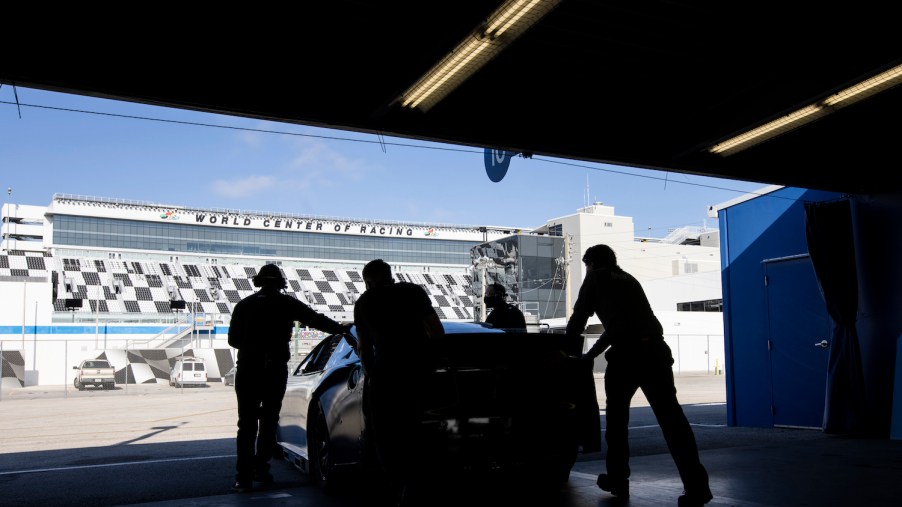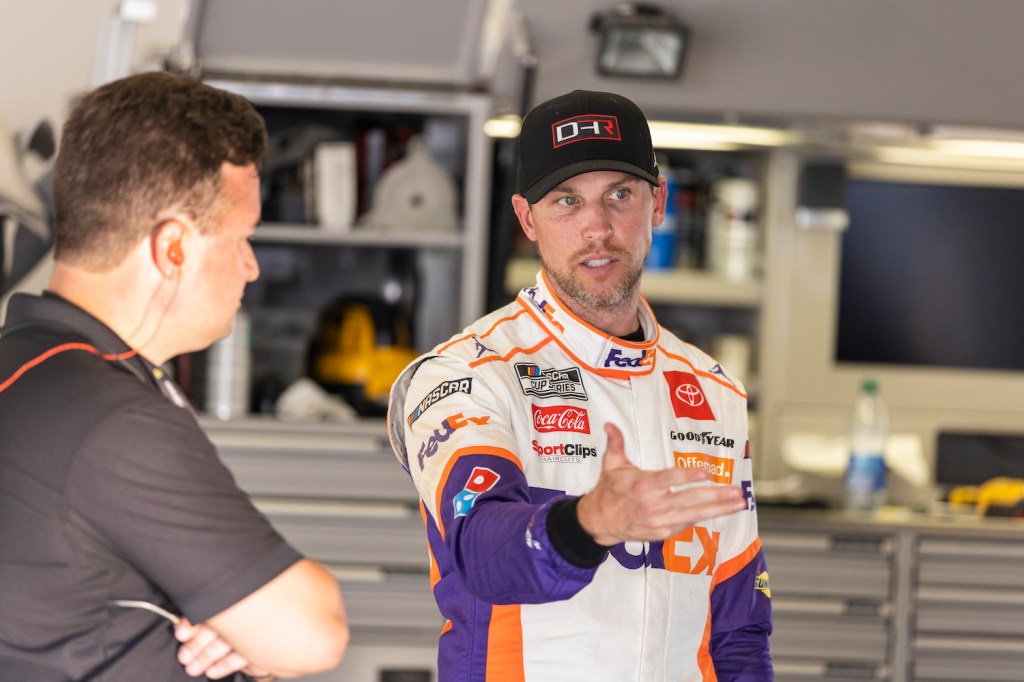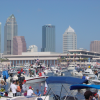
NASCAR Drilling Holes in Next Gen Frames After Crash Test
The NASCAR Next Gen car will debut for the 2022 Cup season. Complications have beset the two-year development of the new race car. First, a routine NASCAR Next Gen crash test at Talleda was rumored to be a disaster. Then, NASCAR refused to share safety information with drivers. But the NASCAR engineers have been tinkering on the Next Gen car. Officials used some interesting techniques to improve the car’s crumple zones ahead of a 21-team mid-October test at the Charlotte Roval.
A NASCAR Next Gen crash test did not go as planned

On June 30th, 2021, officials conducted a NASCAR Next Gen car crash test at the Talladega Superspeedway. First, they fit a prototype with a crash test dummy, then drove it into a dangerous retaining wall.
The teams expected to receive their 2022 chassis immediately after the crash test, but NASCAR did not distribute them. On Reddit, a NASCAR fan asked if the test dummy had been “killed.” Driver Chase Brisco responded, “Correct.” Then he deleted this comment.
Teams expected some hiccups with the Next Gen development. They prepared for NASCAR’s plan and timeline. Instead of a plan, they heard nothing.
Driver and team owner Denny Hamlin revealed, “When it comes to the crash stuff, I’ve asked questions to two different NASCAR people–executives–I can’t get a response. That, to me, makes it even scarier.”
With their lives in the balance, the drivers waited for news. Joey Logano said, “I think we’re all curious to see what the numbers come back at.” Hamlin said, “I’ll have to see all the information.”
The Next Gen chassis: too strong to crumple safely in a crash

On July 19th, NASCAR finally distributed the Next Gen chassis to the teams. The teams built out their Next Gen cars, then began testing them. Finally, on October 11th and 12th, 21 teams descended on the Charlotte Motor Speedway Road Course with their Next Gen cars. After two days of successful runs, NASCAR spoke candidly about the early crash results.
Officials revealed that the new space frame had proven too strong in its initial tests. Logano clarified, “you’ve got to have some crush zones.”
Driver Corey LaJoie explained, “NASCAR’s built some clips to build crush zones to mitigate some of that energy that’s going to be transferred to the driver in a crash.” What is the secret to building crush zones? Drilling holes in the Next Gen frame.
Improving the NASCAR Next Gen crash test results by drilling holes
John Probst is NASCAR’s senior vice president of racing innovation. Probst explained how NASCAR is reducing the frame’s rigidity. The end goal is that either the front or rear of the car can crumple to absorb energy in case of a severe impact.
Probst specified that at the front of the car, officials “drilled holes in the crossmember.” Obviously, technicians did not drill random holes in the frame. Instead, engineers carefully planned how they wanted the front clip to crumple, and NASCAR modified it accordingly.
Probst laid it out, “We modified, one of the lower legs have like a little kick-in, with the idea of allowing more deformation in a crash situation. The idea there is we’re trying to spread the deformation out over a longer period of time.”



